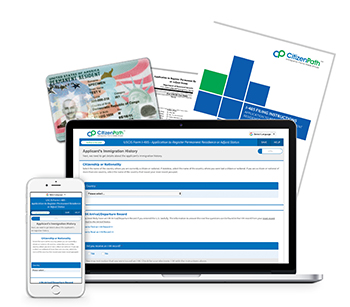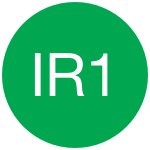Form I-130, Petition for Alien Relative
Form I-130 Overview For:
Form I-130 Explained
What is Form I-130, Petition for Alien Relative?
U.S. citizens, U.S. nationals, and permanent residents can file Form I-130, Petition for Alien Relative, to help a foreign citizen family member obtain permanent residence in the United States (green card status).
Form I-130 starts the process of family-based immigration by establishing the existence of a qualifying relationship to a foreign citizen relative who wishes to immigrate to the United States. The I-130 petition is also a request by the petitioner to reserve an immigrant visa for the family member. Depending on the type of relationship, this process can take just a few months or several years.
Form I-130 is a type of immigrant visa petition. Unlike nonimmigrant visas that are for temporary visits, an immigrant visa is for someone that intends to live and work in the United States permanently. There are other types of immigrant visa petitions. For example, U.S. employers can file an employment-based immigrant visa petition (Form I-140) for a foreign national whom they will sponsor for a green card.
Immigrant Visa Eligibility
Who can file the I-130 petition?
Not all relatives may be petitioned for a green card. Only specific types of relationships qualify. U.S. citizens may petition a spouse, child, parent, or sibling. Permanent residents and U.S. nationals may only petition a spouse or unmarried child (any age). Grandparents, grandchildren, nephews, nieces, uncles, aunts, cousins and in-laws cannot be directly petitioned.
The U.S. immigration system has two major categories of family-based immigrants: immediate relatives and family preference. Immediate relatives include the spouse, parent and children (under age 21) of U.S. citizens. The immediate relative categories are the most desirable. (These categories begin with "IR" below.) An immigrant visa is always available for immediate relatives. What's more, there are certain inadmissibility bars that don't apply to immediate relatives. Therefore, there is no wait. All other family-based immigrants are in the family-preference category. (These categories begin with "F" below.) Often these categories have a wait because demand for green card exceeds the number legally allocated each year by U.S. Congress.
Eligible Relatives of U.S. Citizens

Spouse of a U.S. citizen

Unmarried child (under 21 years of age) of a U.S. citizen

Parent of a U.S. citizen

Unmarried, adult son or daughter (age 21 or over) of U.S. a citizen

Married son or daughter (any age) of a U.S. citizen

Brother or sister of U.S. a citizen
Eligible Relatives of Permanent Residents and U.S. Nationals

Spouse or unmarried child (under age 21) of a permanent resident

Unmarried adult son or daughter of a permanent resident
USCIS I-130 Online Filing
Can Form I-130 be filed online?
USCIS offers an online filing option for the Form I-130, Petition for Alien Relative. But there are tradeoffs when you use USCIS online filing. You can submit your petition quickly. However, this doesn’t necessarily mean you get quick processing or protections from mistakes. If you are interested a quick approval, focus on submitting a well-prepared petition package. It’s the difference between saving a couple of days with online filing versus saving several weeks with smooth processing. What’s more, USCIS is not your advocate. They are not looking out for your best interests. If you include information that damages your petition or your relative's immigration future, USCIS isn’t going to correct you.
For people who want to make sure they are preparing the petition correctly, CitizenPath offers an affordable service created by immigration attorneys. CitizenPath’s Immigrant Visa Petition Package will make the application easy and give you alerts if there’s a problem. You’ll also receive detailed filing instructions so you know exactly which supporting documents to submit with your petition. CitizenPath even provides a money-back guarantee that USCIS will approve your petition.
You may always download a copy of the Form I-130 PDF from the USCIS website. Occasionally, USCIS publishes new editions of the I-130 petition. Make sure you are using an edition which USCIS accepts. Although you may use black ink to fill in your Form I-130 by hand, it’s preferable to file a typed petition. This helps prevent mistakes and may improve intake speed.
Form I-130 Instructions
How do I fill out I-130?
CitizenPath's easy-to-use website helps you prepare the petition quickly and accurately. Our online service provides step-by-step Form I-130 instructions so that you can fill out the petition in just a few minutes. We even give you a money-back guarantee that USCIS will approve your petition.
If you prefer to fill out the PDF-based application, you can download instructions from USCIS or follow this summary of directions.
General Guidance
- Type or print answers in black ink only.
- Enter “N/A” if an answer is not applicable and "NONE" if your answer is zero.
- Foreign language documents must be accompanied by a full English certified translation.
- Submit your petition with the current USCIS filing fee. Use a personal check, money order, cashier’s check or use Form G-1450 to pay by credit card.
- Submit photocopies for all supporting documents unless an original document is specifically required.
Part 1
- For Relationship, indicate which relative will benefit from the I-130 petition. Answer the questions that follow regarding the specific relationship type. Parents' marriage status at birth, step child/parent, and adoptive relationships will all affect the type of supporting documents to submit with the petition.
Part 2
- For Information About You, include details about the petitioner's alien registration number, USCIS online account and Social Security Number if you have them. Although not mandatory, this information can help clarify your identity and facilitate quicker processing.
- For Names, use the petitioner's current legal name. If you want to begin using a married name, you generally may use a marriage certificate from a U.S. state as a legal name change document. Be sure to list any other versions of your name that you've used in the past (such as a maiden name).
- For Mailing Address, provide any address where you can safely receive mail. Include your physical address only if it is different than your mailing address. You should include a full five years of address history.
- For Your Marital Information, provide a complete accounting of your marital history. This is particularly important if your beneficiary is a spouse or child related to the spouse.
- For Additional Information About You, indicate the petitioner's status in the United States as a citizen or permanent resident. Provide the follow-up information regarding how that status was acquired. You may proceed if you are a citizen and do not have your certificate. However, you will need some proof of citizenship (like a U.S. passport) when filing Form I-130.
- For Employment History, provide the petitioner's employers for the past five years. If self-employed, you may enter "Self-employed" in the space for a company name.
Part 3
- For Biographic Information, answer how you identify in terms of race and ethnicity. Indicate other details about your height, weight, eye color and hair color.
Part 4
- For Information About Beneficiary, include details about the beneficiary's alien registration number, USCIS online account and Social Security Number if you have them. Although not mandatory, this information can help clarify their identity and facilitate quicker processing.
- For Names, use the beneficiary's current legal name. If the beneficiary wants to begin using a married name, they generally may use a marriage certificate from a U.S. state as a legal name change document. Be sure to list any other versions of the beneficiary's name used in the past such as a maiden name.
- For Mailing Address, provide an address where the beneficiary can safely receive mail. Also include a physical address only if it is different than the mailing address.
- For Your Marital Information, provide a complete accounting of the beneficiary' marital history. Again, this is particularly important if your beneficiary is a spouse.
- For Information About Beneficiary's Family, list the beneficiary's spouse and children (if applicable). For the purposes of preparing Form I-130, "children" includes any of the beneficiary's children under the age of 21.
- For Beneficiary's Entry Information, provide details about the beneficiary's entry to the United States if they are currently in the U.S. Most of the information can be found on the beneficiary's I-94 arrival/departure record.
- For Employment History, provide the beneficiary's current employment situation. If self-employed, you may enter "Self-employed" in the space for a company name.
Parts 5, 6, 7, and 8
- For Other Information, indicate if you previously filed or intend to file future I-130 petitions for other family members. Provide the relevant details to the best of your ability.
- For Petitioner's Statement, the petitioner should provide the requested information. Provide an email and U.S. phone numbers where USCIS can reliably reach you. USCIS will rarely call petitioners, but they will use email. Sign your petition with black ink. A surprising number of I-130 rejections are the result of petitioners forgetting to sign or signing in the wrong place.
- For Interpreter and Preparer, provide information if applicable. If another person translated or prepared the petition for you, be sure Parts 7 and 8 are filled in and signed appropriately.
Form I-130A Supplement
Petitioners filing Form I-130 for a spouse beneficiary must also file Form I-130A, Supplemental Information for a Spouse Beneficiary. Form I-130 is simply a supplement with additional information about your spouse. The spouse beneficiary is not required to sign I-130A if he or she is living abroad.
This is an abbreviated list of Form I-130 instructions. We highly recommend that you download USCIS instructions or use CitizenPath’s service to prepare the petition. CitizenPath provides step-by-step guidance through the petition. You’ll also get detailed I-130 filing instructions that explain which supporting documents to submit, how to organize, and where to mail.
Submit the Petition
Where to send Form I-130?
USCIS accepts the I-130 petition via e-file and mail. They do not want petitioners to submit Form I-130 in-person at USCIS offices.
At the time of writing this guide, USCIS receives standalone petitions at two locations called lockboxes: Elgin, IL and Phoenix, AZ. Although USCIS receives your petition at these locations, they will process them somewhere else. If you have an interview, it will be at a USCIS office near that address you provide.
Petitioners who live in the following states and territories will file at the Phoenix lockbox: Alaska, American Samoa, Arizona, California, Colorado, Commonwealth of the Northern Mariana Islands, Florida, Guam, Hawaii, Idaho, Kansas, Montana, Nebraska, Nevada, New Mexico, North Dakota, Oklahoma, Oregon, Puerto Rico, South Dakota, Texas Utah, U.S. Virgin Islands, Washington, or Wyoming.
If you are sending via the U.S. Postal Service, mail the package to:
USCIS
Attn: I-130
P.O. Box 21700
Phoenix, AZ 85036-1700
If you will send via a courier service like FedEx, UPS or DHL, mail the package to:
USCIS
Attn: I-130 (Box 21700)
1820 E. Skyharbor Circle S, Suite 100
Phoenix, AZ 85034-4850
Petitioners who live in other states, territories or outside the United States will file at the Elgin lockbox.
If you are sending via the U.S. Postal Service, mail the package to:
USCIS
Attn: I-130
P.O. Box 4053
Carol Stream, IL 60197-4053
If you will send via a courier service like FedEx, UPS or DHL, mail the package to:
USCIS
Attn: I-130 (Box 4053)
2500 Westfield Drive
Elgin, IL 60124-7836
If you plan to file Form I-130 concurrently with Form I-485, there are separate lockbox addresses for this purpose. Please note that USCIS does occasionally change lockbox locations that receive petitions. Refer to your CitizenPath filing instructions or the USCIS website for the most up-to-date information.
I-130 Petition Processing Time
How long does it take?
USCIS processing times for the I-130 petition vary significantly based on the category. Generally, USCIS adjudicates immediate relative petitions more quickly because an immigrant visa is already available. The process will typically take a minimum of six months and up to a year. Family-preference petitions will likely take longer. CitizenPath customers often experience some of the quicker processing times. Well-prepared petitions have the best chance to receive a quick approval. For an in-depth look at what happens after filing Form I-130, visit our I-130 processing time line.
Reporting for processing times only includes forms that were successfully filed. If an individual does not correctly prepare a form or otherwise does not satisfy eligibility requirements, USCIS will reject or deny these requests. For the most recent year, USCIS reported the following national statistics:
USCIS Rejections in 2022
MODERATE RISK
USCIS Denials in 2022
HIGH RISK
It's also helpful to understand that I-130 beneficiaries must have a visa immediately available to them in order to submit an immigrant visa (green card) application. Remember, an immigrant visa is always available to immediate relatives. There is no limit. U.S. congress puts annual limits on the number of visas issued in each of the family-preference categories. USCIS may approve the petition before a visa is actually available. Therefore, applicants must have a petition that is approved and "current" in the visa bulletin. For more information about this topic, learn how to read the visa bulletin.
How CitizenPath Helps You
Is there an inexpensive way to file the I-130 petition?
CitizenPath's affordable, online service makes it easy to prepare Form I-130, Petition for Alien Relative. Designed by immigration lawyers, the Immigrant Visa Petition Package helps you eliminate the common errors that create delays, rejections and even denials. That's because the service alerts you when your answer to a question may be a problem. You'll also get customized filing instructions based on your situation. It's a powerful, do-it-yourself tool that puts you in control. And we've got your back -- CitizenPath provides live customer support and provides a money-back guarantee that USCIS will approve your petition.
STEP 1 | Check Eligibility | |
We're going to ask you a few questions to make sure you're eligible and preparing the correct form. | ||
STEP 2 | Prepare Form I-130 | |
Our software will guide you through the I-130 petition using simple step-by-step instructions. | ||
STEP 3 | Download, Print and File | |
Once you're completely satisfied, you’ll be able to print your I-130 and customized filing instructions. | ||









